Ubuntu 25.04 launches with host of new features
A very slick operating system, but one with short support.
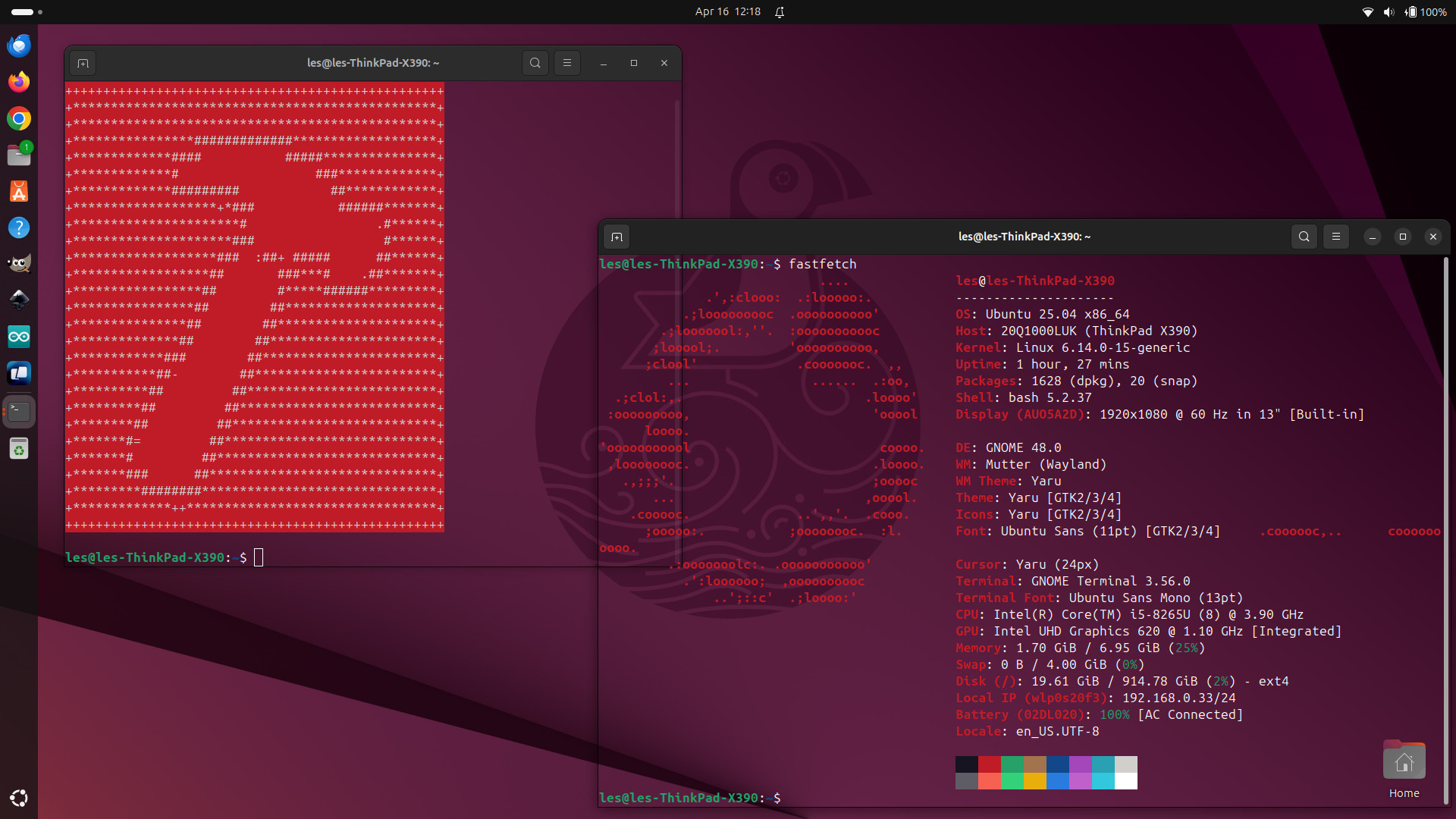
Ubuntu 25.04, codenamed “Plucky Puffin” was recently released. Ubuntu 25.04 is an interim release, bringing new features and updates for the venerable Ubuntu Linux distro, and I got hands on with a release candidate to tell you all about the latest version.
I’ve been casually using Ubuntu since 5.04 “Warty Warthog”, and seriously using it since 6.06 “Dapper Drake”, the first Long Term Support (LTS) release back in 2006. Before Ubuntu I used Red Hat, Mandrake (that was a great distro back in the day), Corel Linux (yes, that Corel) and Open Suse, but Ubuntu offered something a little extra: Ease of use.
Ubuntu 25.04 is not an LTS, this means that you will get nine months of support. An LTS release is made every two years, with the previous release being Ubuntu 24.04 (Noble Numbat). Ubuntu 24.04 will receive updates and support until April 2029 and beyond should you be an Ubuntu Pro user. But, for Ubuntu 25.04 we get just nine months of support. Interim releases are production quality, meaning that they can be used in a production environment. But if you need the ultimate stability, LTS releases offer “enterprise grade” levels of stability and support.
Ubuntu Release Support Schedules
| Header Cell - Column 0 | Released | End of Standard Support | End of Ubuntu Pro Support | End of Legacy Support |
|---|---|---|---|---|
25.04 | April 2025 | January 2026 | Row 0 - Cell 3 | Row 0 - Cell 4 |
24.1 | October 2024 | July 2025 | Row 1 - Cell 3 | Row 1 - Cell 4 |
24.04 | April 2024 | April 2029 | April 2032 | April 2036 |
22.04 | April 2022 | April 2027 | April 2032 | April 2034 |
New features in Ubuntu 25.04
The latest Linux 6.14 kernel brings updates for graphics, security, and underlying resource management. The service manager systemd has been updated to v257.4. Netplan, the utility that simplifies network configurations.
Other notable upgrades include:
- GCC a snapshot of upcoming GCC 15. Binutils updated to 2.44 and glibc to 2.41.
- Python updated to 3.13.3.
- LLVM (compiler / toolchain and developer tools) updated to v20.
- Rust toolchain defaults to v1.84.
- Golang updated to 1.24.
- OpenJDK snapshot v24, v25 early access available.
The installer uses Flutter, introduced a few years ago and while it is hard to get excited about an installer, Flutter does improve the experience for new and experienced users. I’ve used Linux for almost 30 years (I am officially old) and the installation process on those earlier Linux distros was scary.
Now it is clear, concise and dare I say a pleasurable experience. Improvements for Ubuntu 25.04 see an improved UX for dual boot systems (especially for Bitlocker partitions) and there is now the option to replace an existing Ubuntu installation.
Get Tom's Hardware's best news and in-depth reviews, straight to your inbox.
GNOME 48 looks great, and at a casual glance it resembles previous releases. But, it does have a few new features and refinements for a better user experience. When a window opens, it automatically opens in the center of the screen. Reducing the “Where did my app open?” scenario that we have all encountered!
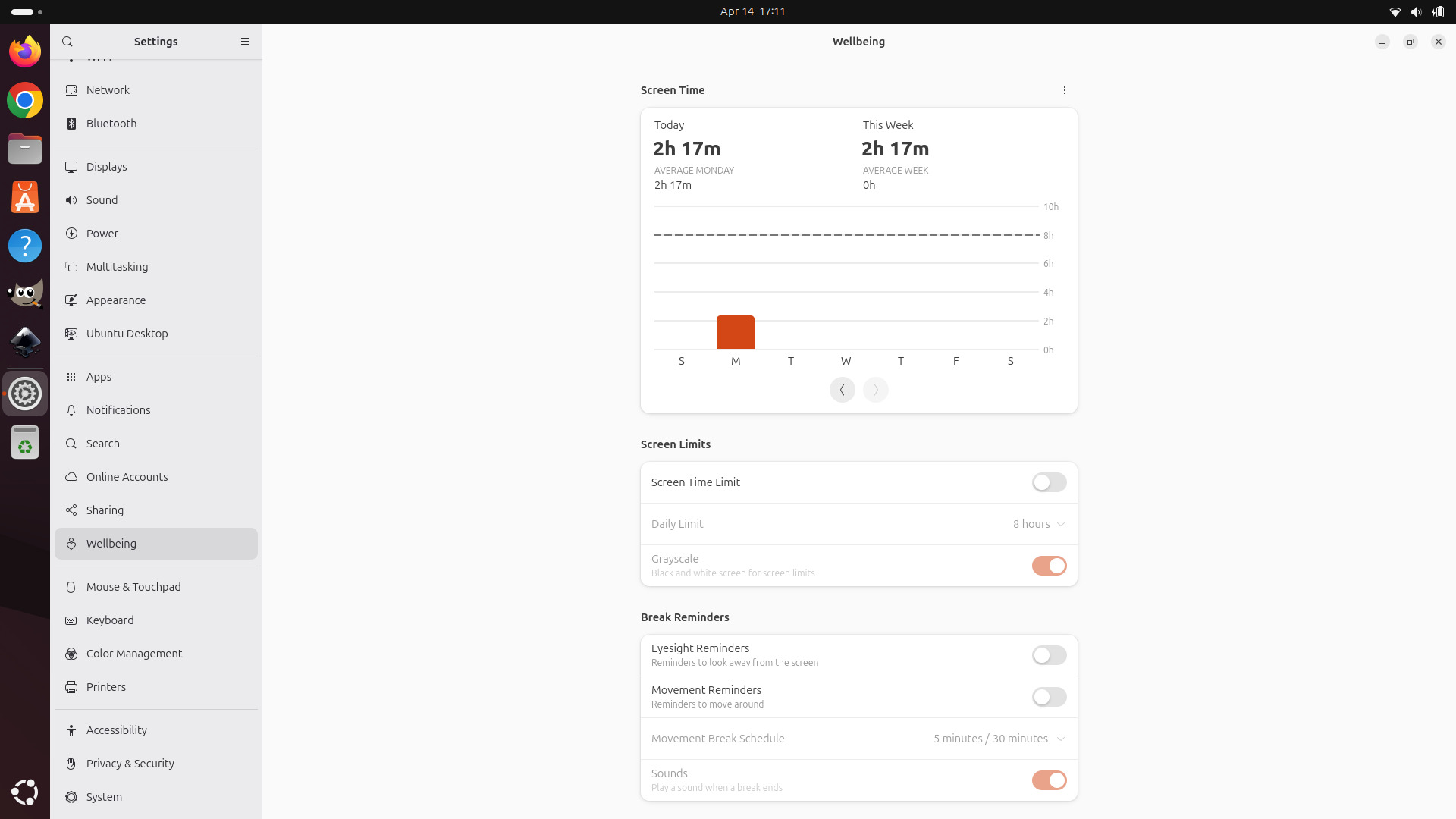
As great as GNOME 48 looks, we need to take some screen breaks, and the Wellbeing tool, found in the Settings menu, will tell you how long you have been using Ubuntu 25.04, and provide reminders to stop staring at the screen, and to move around.

Ubuntu 25.04 comes with some new app choices. Evince, a capable PDF document viewer has been replaced by Papers. Papers started from the Evince codebase, and has been partially rewritten to use Rust, and uses the GTK4 widget toolkit. If you are upgrading to Ubuntu 25.04 and have a personal terminal preference, then you’ll be pleased to know that xdg-terminal-exec will respect your choice of terminal (Ghostty for example).
Updated applications include:
- Firefox 137
- LibreOffice 25.2
- Thunderbird 128 email
- GIMP (GNU Image Manipulation Program) is available for installation.
GNOME 48 user interface with support for HDR although that support is not enabled by default. You need to go to Settings > Display to make this change, but it only shows if your monitor is HDR-compatible.
Updated subsystems, the applications that work with the core Ubuntu OS to provide extra features include:
- BlueZ, the Bluetooth stack has been updated to 5.79.
- The Cairo 2D graphics library has been updated to 1.18.4.
- The Network Manager, network connection manager has been updated to 1.52.
- The next generation cross desktop audio and video server, Pipewire has been updated to version 1.2.7.
- The PDF rendering library Poppler sees an update to 25.03.
- Xdg-desktop-portal, used for sandboxed applications (such as those installed via Flatpak or Snap) to interact with the desktop, has been updated to version 1.20.
- Nvidia 570
Support for Nvidia Dynamic Boost, which shifts power between the CPU and GPU depending on the workload. Gamers should see more performance when their laptop is plugged into the wall. Ubuntu 25.04 also brings “full support” for Intel Core Ultra Xe2 and Intel Arc graphics such as “Battlemage” B580 and B570 GPUs. If you rely on Intel graphics, then you’ll see improved GPU and CPU ray tracing performance, along with full hardware accelerated video encoding for AVC, JPEG, HEVC and AV1 formats.
But how does Ubuntu 25.04 perform?
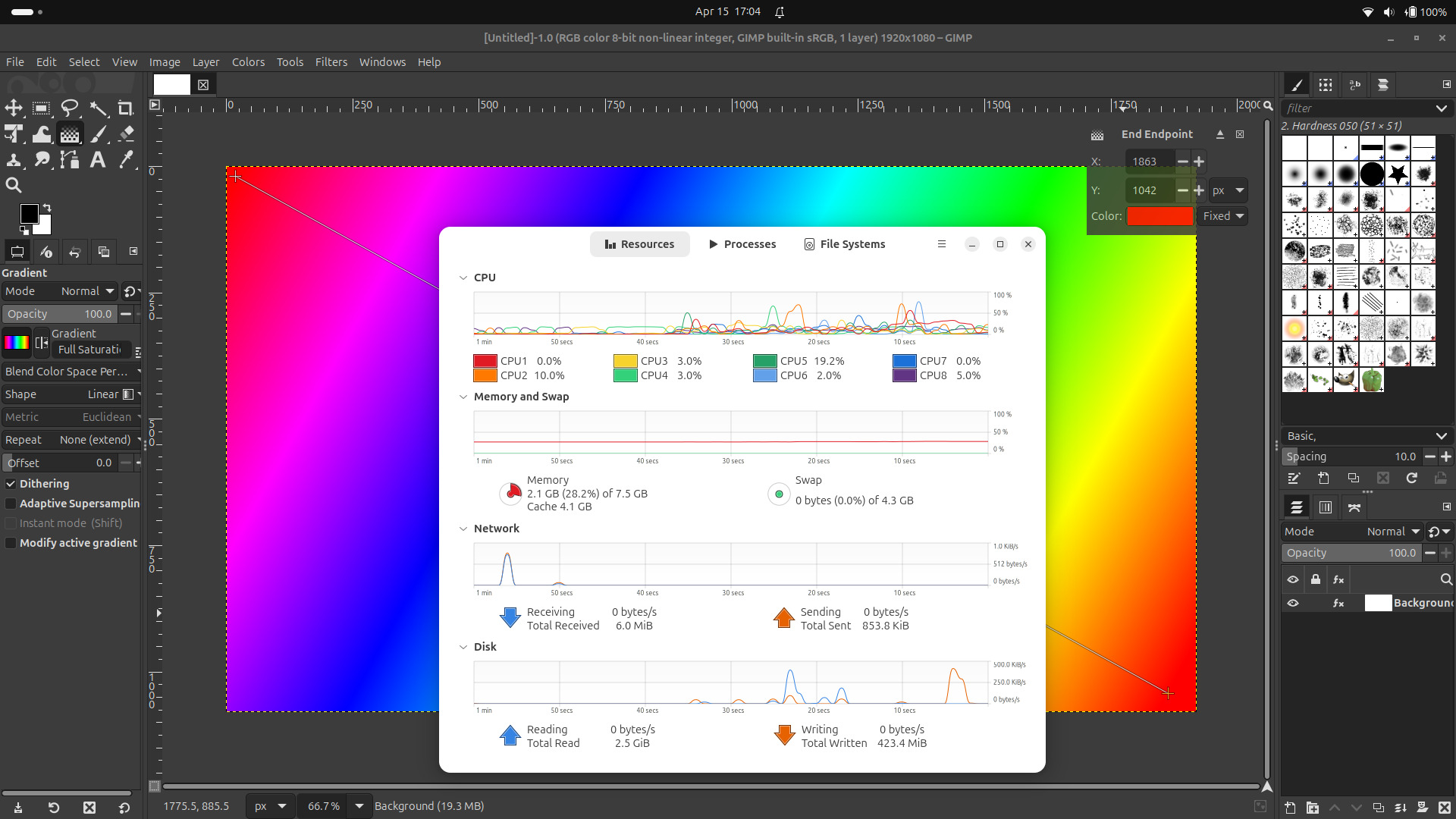
On my Lenovo X390 with 8GB of RAM and an Intel Core i5-8265U it ran smoothly and without issues. Installation from a USB drive took around 20 minutes and I elected to install third-party drivers for restricted video and audio formats. After the installation was complete, a quick reboot and I was presented with the glorious GNOME 48 desktop and the Plucky Puffin wallpaper.
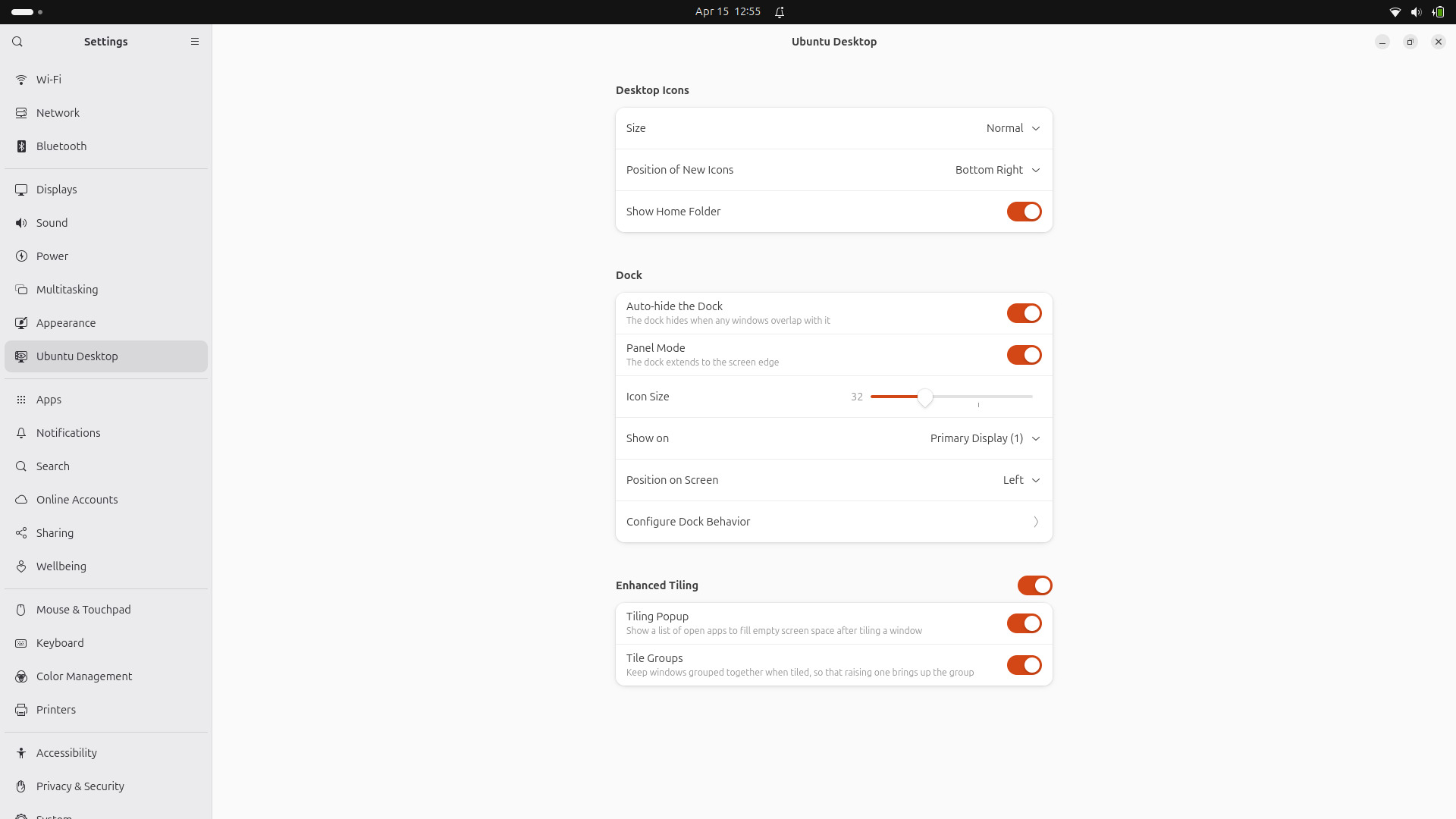
The standard app launcher (dock) is to the left of the screen, and by default it takes up a thin column of the horizontal space. You can make this thinner, if your eyes are up to the job. I prefer to set this to 32 pixels via Settings >> Ubuntu Desktop >> Dock >> Icon Size. I also like to auto hide the dock when it is not needed, to free up a few extra pixels.
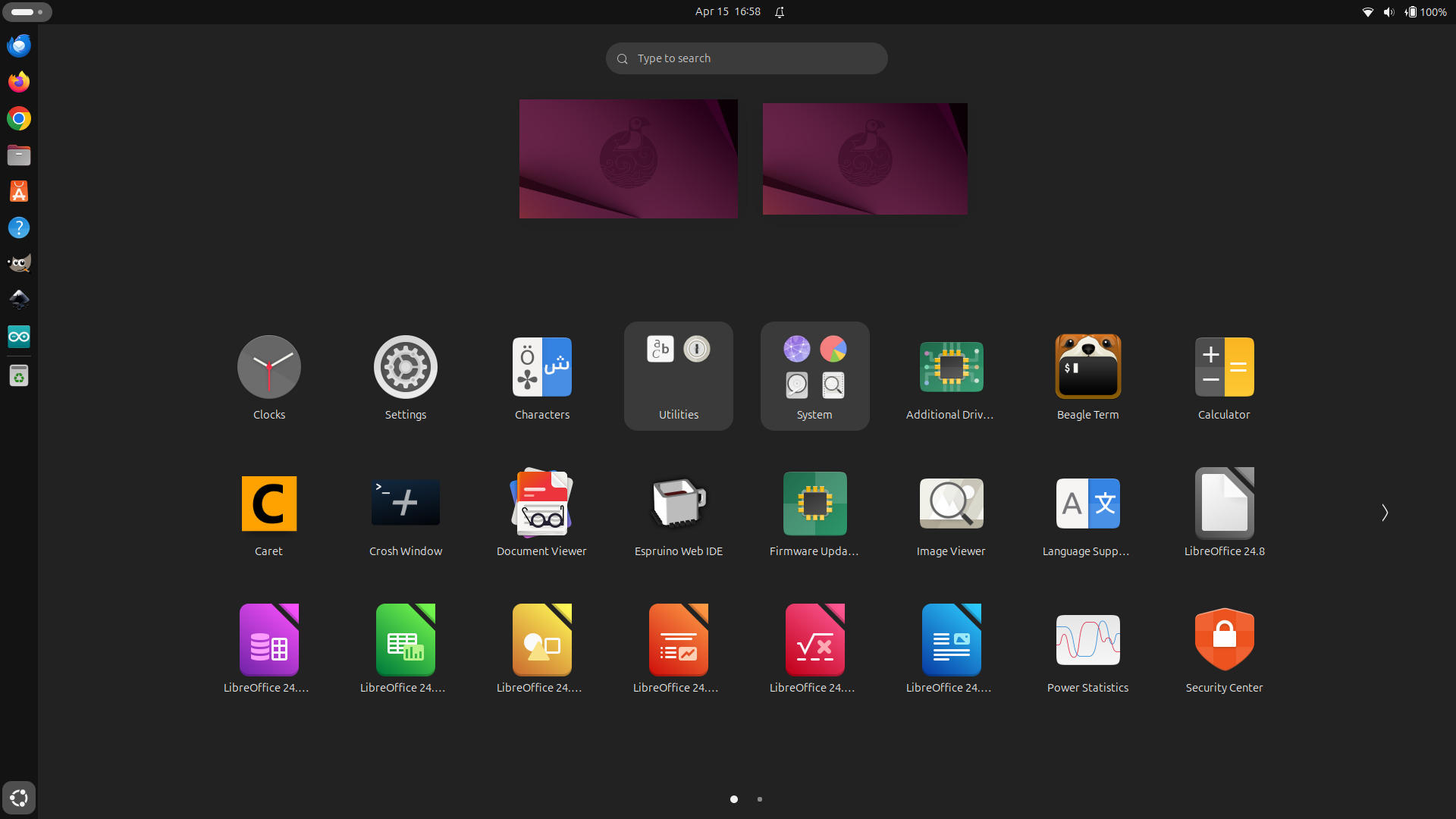
Pressing the Super (Windows) key will show a search box. Type in the name of your chosen application and Ubuntu will interactively search for it. It will suggest apps that meet the criteria. If you want to see all of your apps, click on the Ubuntu “circle of friends” icon in the bottom left. Pressing CTRL + ALT and then the left or right cursor key will swap between the two default workspaces. Handy for those of us who have a lot of applications open.
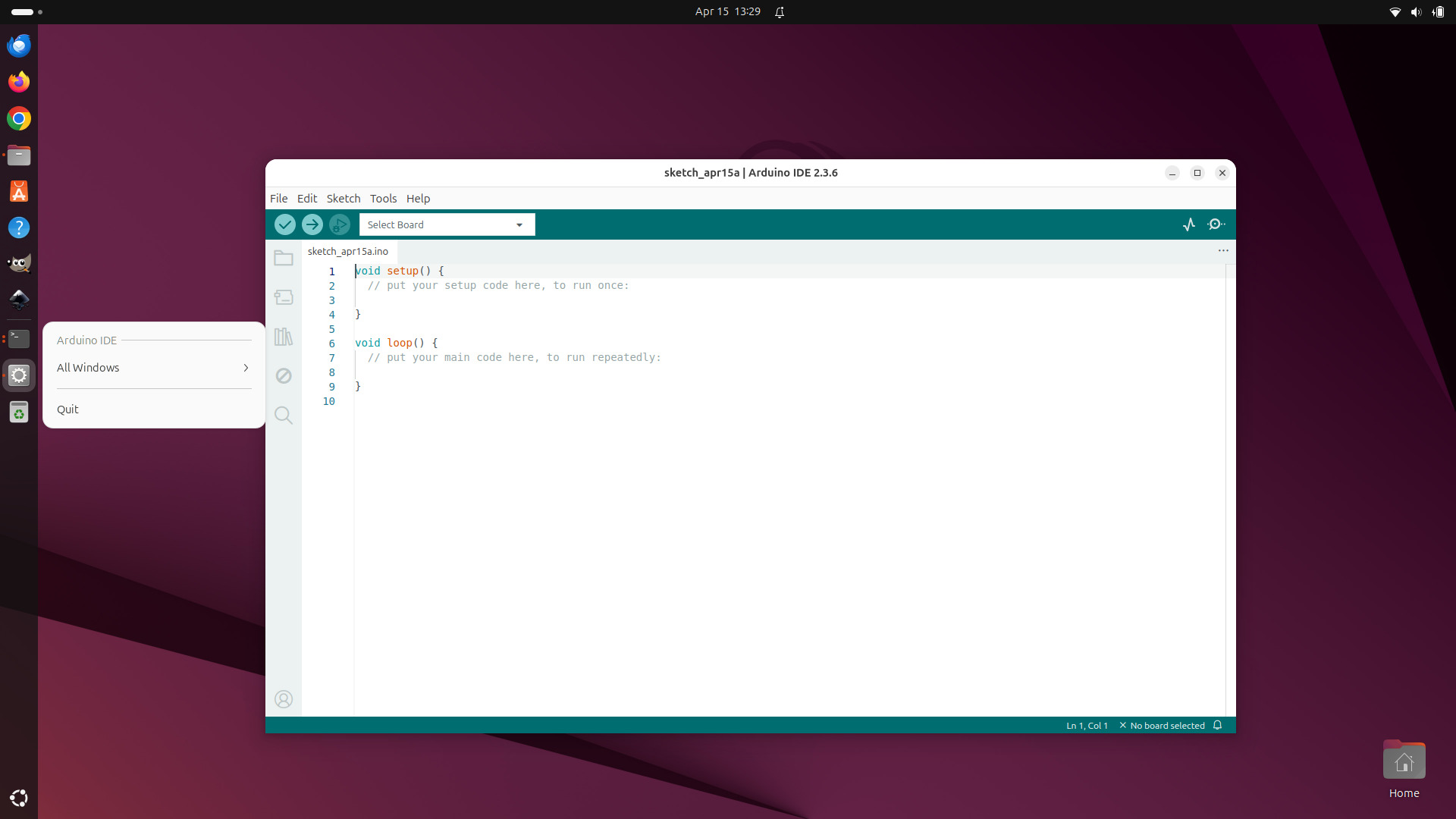
Speaking of the dock, here is where I have an issue. My issue is adding apps to the dock. If they are installed via the App Center or via APT, then all is good. But one application, the latest version of the Arduino IDE, had me scratching my head. You see, the app is not installed, rather it is delivered as a ZIP file or an AppImage executable. Both run on Ubuntu 25.04, but I cannot pin the icon to the dock. There is a means to do this using the GNOME debugging tool to hunt the app then create a new desktop file, but it is a shame that Ubuntu 25.04 hasn’t made this issue easier to solve. Yes, I will make a short how-to covering just how I achieved this.
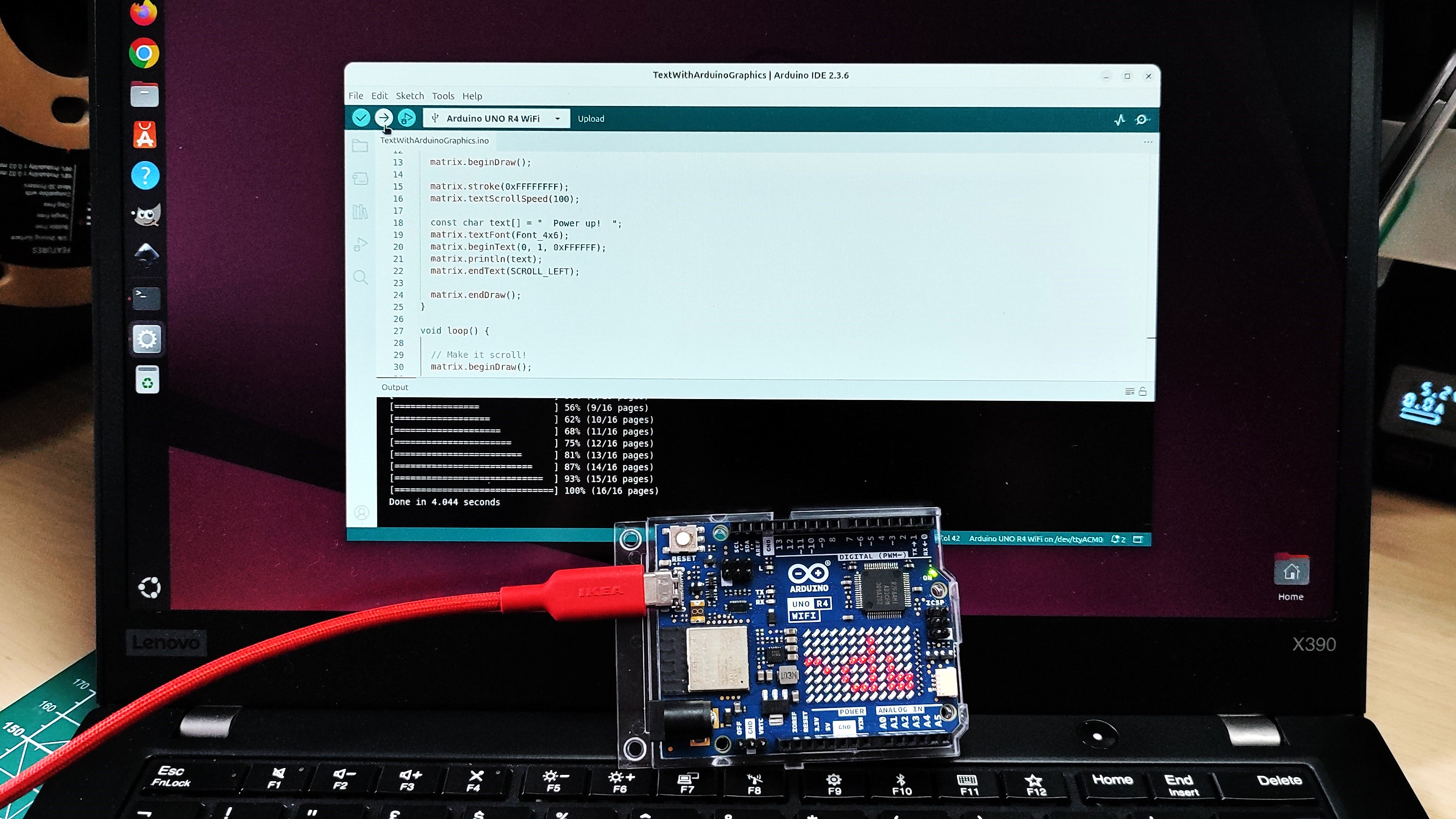
I was able to successfully install and use the latest version of the Arduino IDE, flashing code to my Arduino Uno R4 WiFi with relative ease.
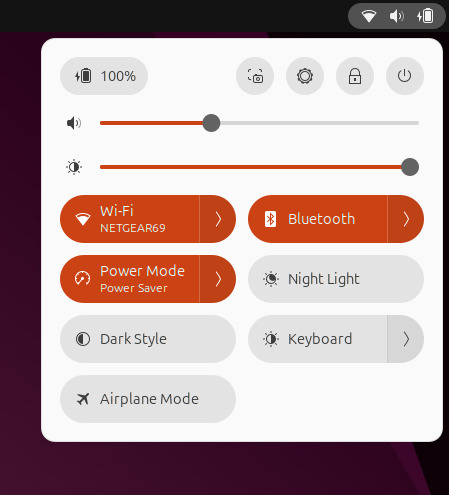
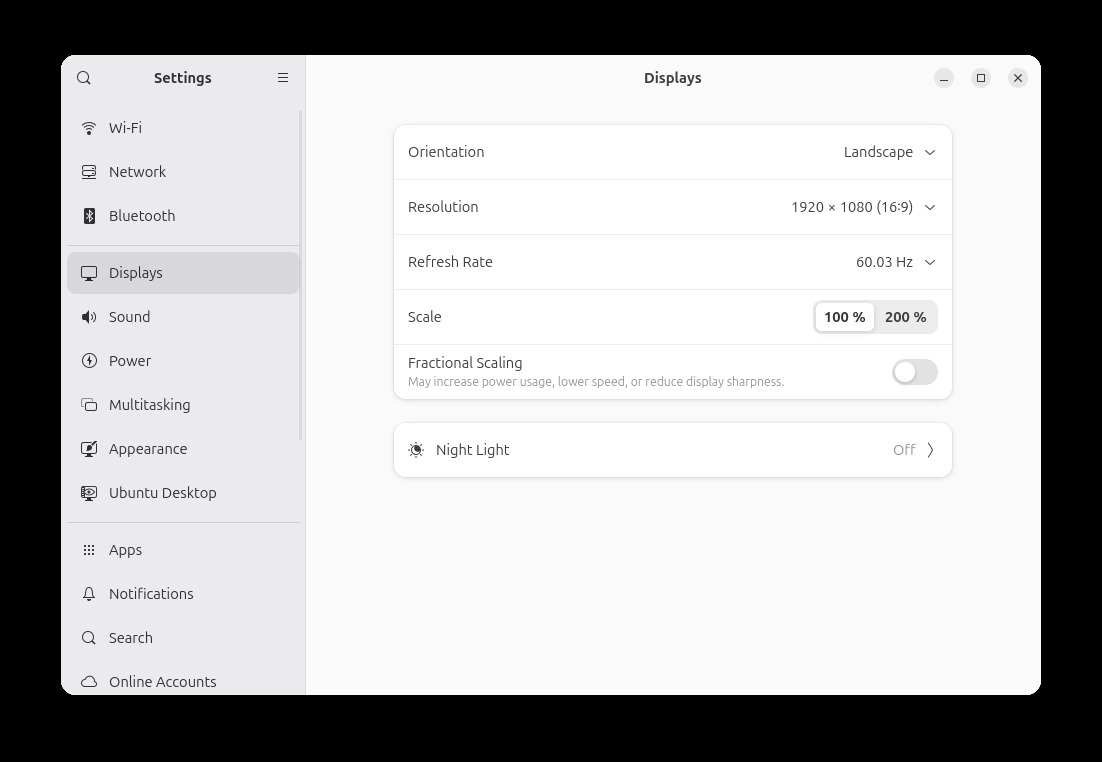
In the top right corner is the Settings menu, and here we have quick access to common settings such as Wi-Fi, Bluetooth, Volume and Brightness. This isn’t new, but it is always welcome as it provides a single point from where we can tweak our setup. The “cog” in the Settings menu is where we can delve deeper into the configuration of our system and it is great to see that Ubuntu 25.04 continues to use a categorized list and provides a search function.
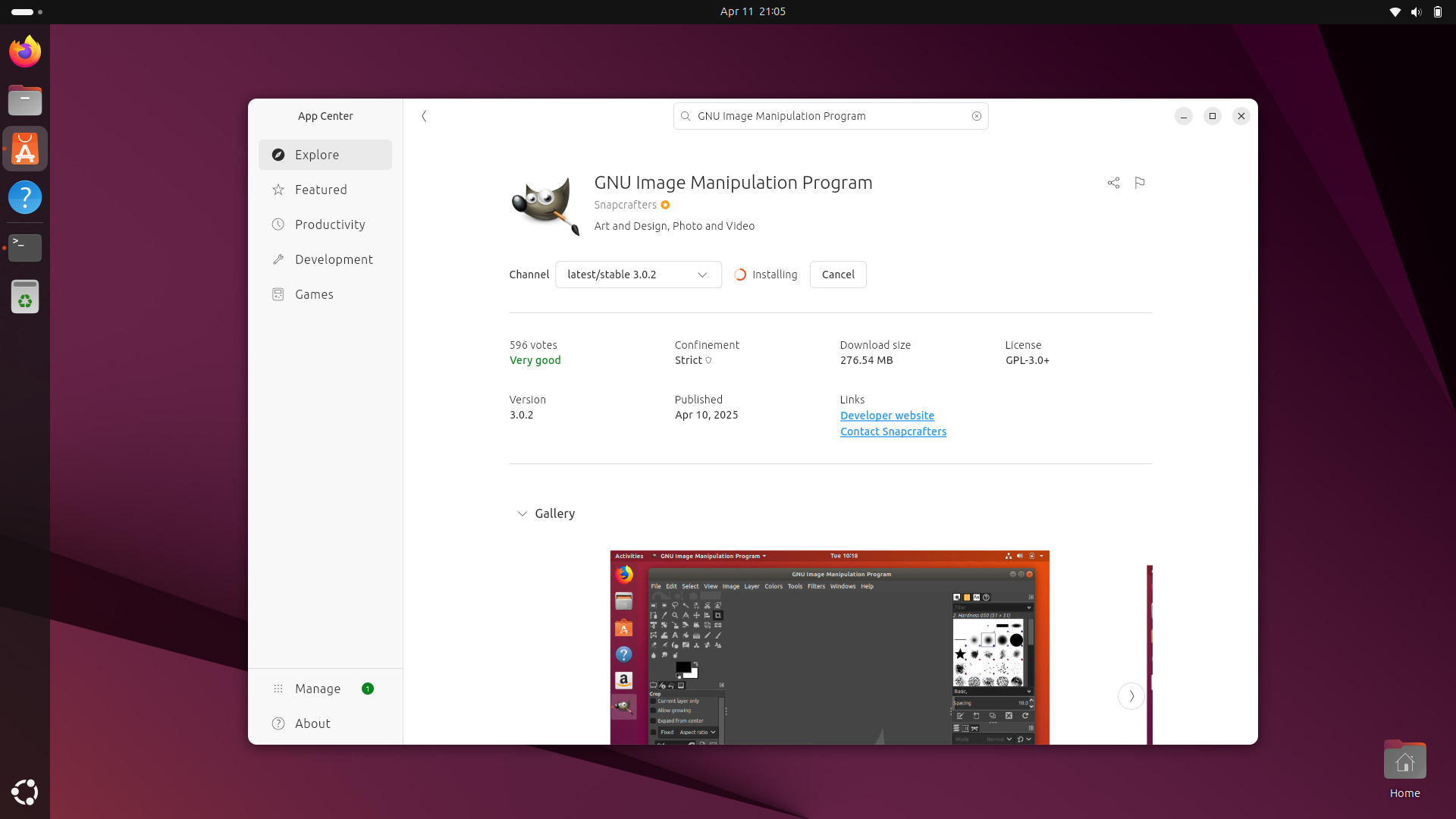
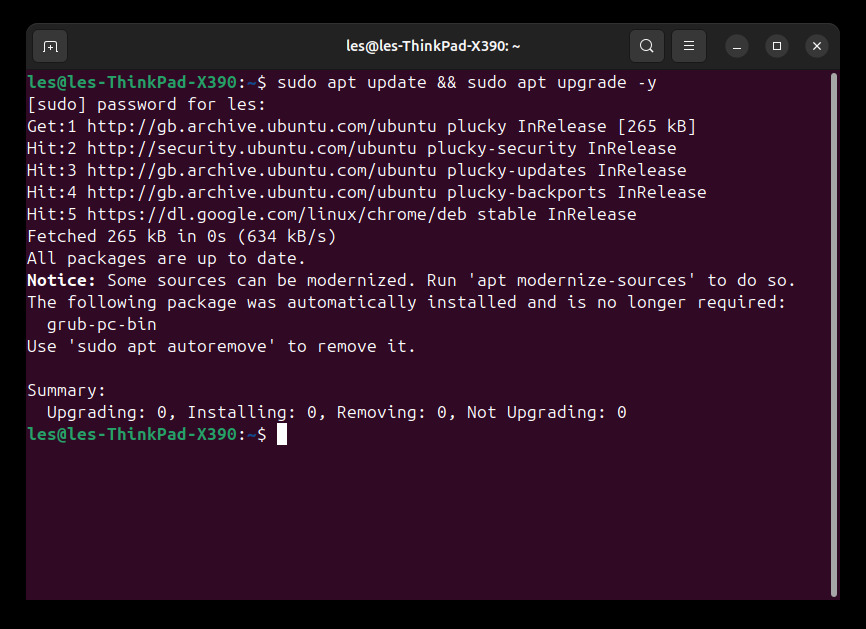
Software installation, via App Center and the terminal is a breeze. If you are new to Linux, stick to the App Center as it handles every aspect of application management for you. It can feel a little slow though. The progress bar when installing an application seems to take forever.
Under the hood though, Ubuntu is using one of two possible installation options. First it will look for a Snap, Canonical’s sandboxed application installer which enables apps to talk to the underlying OS, but not make any major changes. The other option is good ol’ APT (Advanced Packaging Tool) via the terminal. It shows everything as it happens, often at a dizzying pace. Sure the terminal is a confusing place for newcomers, but learn the basics and you will have a good foundation to build from.
Should you install Ubuntu 25.04?
If you want the latest Ubuntu experience, install Ubuntu 25.04. Nine months support isn’t a long time, but you get a solid Linux desktop experience and a great selection of applications. If your work depends on stability, then the call is all yours. For enterprise / mission critical applications I would recommend sticking to Ubuntu 24.04 as it is an LTS and offers a longer period of support. If you work in production, and want to take the risk, go for it!
Home and hobbyist users can take the plunge with less risk, but always backup your drive(s) before undertaking the upgrade. Even with my now six year-old laptop, Ubuntu 25.04 feels fresh and speedy enough to get work done when on the go. Throwing Ubuntu 25.04 on my main desktop (a system with 32GB DDR4, AMD Ryzen 5600X with an Nvidia RTX 4070 GPU) would provide me with an exceptionally slick experience. But right now I am rocking Kubuntu 24.04 as I am a sucker for KDE.
If you prefer other flavors of Ubuntu, the community has your back. There will be 25.04 versions of Kubuntu, Lubuntu, Xubuntu, Ubuntu MATE and many other respins available from today and in the coming days.

Les Pounder is an associate editor at Tom's Hardware. He is a creative technologist and for seven years has created projects to educate and inspire minds both young and old. He has worked with the Raspberry Pi Foundation to write and deliver their teacher training program "Picademy".
-
Jame5 Replybringing new features and updates for the vulnerable Ubuntu Linux distro
I'm guessing this was supposed to be "venerable". As in it's been around awhile.